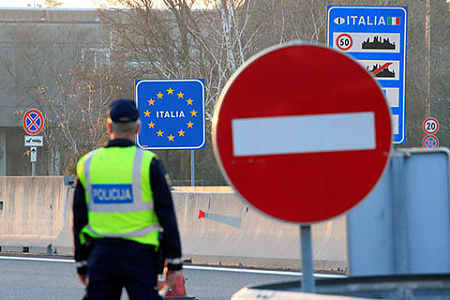
The specter of the 2015 migrant crisis is looming over Europe, prompting a growing number of nations to challenge one of the European Union’s core tenets: freedom of movement. At least ten countries within the supposedly borderless Schengen Area have reinstated internal border checks, signaling a significant shift driven by fears of a new, large-scale influx of migrants and heightened security threats.
Slovenia, a key transit country during the 2015 crisis, is at the forefront of this trend, extending its temporary controls on the borders with Croatia and Hungary until the end of the year. Slovenian officials have attributed the decision to a confluence of factors, including the war in Ukraine and increased terror threats. However, a primary concern is the escalating instability in the Middle East, with specific fears that a potential conflict in Iran could trigger a humanitarian catastrophe and a refugee wave from its 90-million-strong population, far exceeding previous flows from Syria or Libya.
This is not an isolated action. Following Slovenia’s lead, which was itself a response to Italy tightening its shared border, a coalition of nations including Germany, France, Austria, and Spain have implemented similar measures. These moves are legally sanctioned by a recent update to the Schengen Borders Code, which permits temporary controls for up to two years in response to serious threats. For most of these countries, the stated rationale is the immense pressure of unauthorized migration and the associated security risks.
The wave of national border controls has drawn criticism from Brussels. The European Commission has voiced its displeasure, arguing that the measures hinder economic integration and undermine the EU’s authority. These actions are seen as a tacit admission that the bloc’s centralized policies for managing migration have been insufficient. The tension is palpable, with the Commission having previously threatened Austria with legal action for repeatedly extending its own border controls.
For national governments, however, these actions are a pragmatic lesson learned from the past. The memory of 2015, when the EU struggled to manage the sudden arrival of over a million migrants, leading to significant socio-economic and political fallout, is a powerful motivator. Countries, particularly those on the EU’s external and transit frontiers like Italy, Spain, and the Balkan states, are now implementing preemptive measures, determined to avoid a repeat of the crisis that strained their resources and societies nearly a decade ago.
There are early signs that the strategy may be working. Slovenian police report that the reinforced controls, combined with joint patrols with Italy and Croatia, have led to a tangible decrease in illegal crossings this year compared to the last. While this success may validate the decisions of national governments, it poses a fundamental challenge to the vision of a borderless Europe. If suspending the Schengen agreement proves to be an effective tool against illegal migration, it could force a difficult reckoning for the EU, pitting the promise of open borders against the sovereign demand for security.
